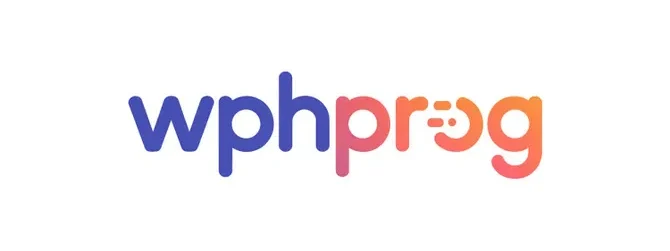Introduction
A website is more than just code — it’s a platform for storytelling, communication, and engagement. At WPHProg, we believe that compelling content combined with smart WordPress customization is the key to creating websites that delight visitors and achieve tangible results. Whether you are running a blog, an e-commerce site, or a portfolio, understanding how to structure content and extend WordPress functionality is critical to success.
This guide will help you master both the art of content creation and the science of WordPress customization, enabling you to build sites that are visually appealing, highly functional, and optimized for your audience.
1. Understanding Your Audience
Before creating content, you must understand who your website is for. A deep knowledge of your audience ensures that every piece of content resonates with them and drives engagement.
Steps to Identify Your Audience:
- Create Personas: Map out your ideal visitors, including their goals, challenges, and preferred content formats.
- Analyze Behavior: Use tools like Google Analytics to see which pages perform best and where visitors drop off.
- Map User Journeys: Understand how users navigate your site from landing to conversion, and structure content accordingly.
Example:
For a WordPress tutorial site, your audience may include beginners, freelance developers, and agencies. Creating separate content paths for each — like “Getting Started,” “Advanced Coding Tips,” or “Client Project Workflows” — will increase relevance and retention.
2. Content Best Practices
Well-written content is crucial, but formatting and structure matter just as much. WordPress offers tools like Gutenberg blocks, widgets, and custom post types to help organize and present your content effectively.
Key Techniques:
- Readable Copy: Use short paragraphs, headings, and bullet points for clarity.
- SEO Optimization: Incorporate keywords naturally, write meta descriptions, and use internal linking.
- Calls-to-Action: Encourage visitors to take action, whether subscribing to a newsletter, downloading a resource, or exploring a course.
Example:
A blog post about plugin development could have headings like:
- Introduction to Plugins
- Step-by-Step Tutorial
- Code Snippets and Examples
- Common Mistakes and Fixes
- Call-to-Action: Download the Starter Plugin Template
3. Customizing WordPress for Content
Content becomes truly effective when it’s paired with smart WordPress customization. WordPress allows you to extend the platform beyond basic posts and pages using custom post types, taxonomies, and fields.
Techniques for Customization:
- Custom Post Types (CPTs): Create specialized content types like portfolios, case studies, or product reviews.
- Custom Taxonomies: Organize content in meaningful categories beyond the default tags and categories.
- Advanced Custom Fields (ACF): Add custom metadata to posts for dynamic content display.
Example: Displaying a Portfolio with Custom Fields
$args = array('post_type' => 'portfolio', 'posts_per_page' => 6);
$portfolio_query = new WP_Query($args);
if($portfolio_query->have_posts()) {
while($portfolio_query->have_posts()) {
$portfolio_query->the_post();
$client = get_field('client_name');
echo '<h2>' . get_the_title() . '</h2>';
echo '<p>Client: ' . $client . '</p>';
}
wp_reset_postdata();
}
This allows you to display client-specific data for each portfolio item dynamically.
4. Integrating Multimedia & Interactive Features
Content today isn’t limited to text. Images, videos, sliders, and interactive elements enhance user engagement. WordPress supports media embedding and can be extended further with PHP and JavaScript.
Tips for Multimedia Integration:
- Use optimized images for faster load times.
- Embed videos from YouTube or Vimeo efficiently.
- Add interactive elements like tabs, accordions, or filters with custom code or plugins.
Example: Dynamic Testimonials with Custom Fields
$args = array('post_type' => 'testimonial', 'orderby' => 'date');
$testimonials = new WP_Query($args);
if($testimonials->have_posts()) {
echo '<div class="testimonial-slider">';
while($testimonials->have_posts()) {
$testimonials->the_post();
$author = get_field('author_name');
echo '<div class="slide"><p>' . get_the_content() . '</p><strong>' . $author . '</strong></div>';
}
echo '</div>';
wp_reset_postdata();
}
5. Optimizing Content for Engagement
Content is only valuable if your audience interacts with it. Optimizing your WordPress site for user experience (UX) and engagement ensures your message is heard.
Strategies:
- Internal Linking: Guide readers to related posts or resources.
- Mobile Optimization: Ensure all content displays beautifully on any device.
- Page Speed: Compress images, use caching, and minimize unnecessary scripts.
- Readable Design: Use consistent typography, white space, and intuitive navigation.
Example:
A tutorial site might show a related posts section under every article, automatically populated using categories or tags, keeping users engaged longer.
6. Workflow & Tools for Content Management
Efficient content creation requires structured workflows and reliable tools. WordPress offers flexibility, but combining it with the right tools improves productivity.
Recommended Practices:
- Editorial Calendars: Plan content weeks or months in advance.
- Staging Sites: Test new content layouts or features before going live.
- Version Control: Use Git for tracking changes to custom templates and plugin files.
- Collaboration: Leverage tools like Trello, Notion, or Slack for team workflows.
Example:
If you’re rolling out a new course tutorial series, use a staging environment to test custom blocks, check formatting, and ensure responsive design before publishing.
7. Measuring Success
The final step is to measure how your content performs and iterate accordingly. WordPress integrates seamlessly with tools like Google Analytics, Search Console, and heatmaps.
Key Metrics:
- Page views, bounce rate, and session duration
- Conversion actions (form submissions, downloads, purchases)
- User interaction with multimedia and dynamic content
- Performance metrics (load times, mobile speed)
Analyzing these metrics helps you refine your content strategy and improve user experience.
Conclusion
Great WordPress content isn’t just about writing — it’s about combining storytelling with smart customization and development practices. By leveraging WordPress’s features, custom post types, plugins, and PHP, you can create engaging, functional, and scalable websites that truly connect with your audience.
At WPHProg, we teach developers and creators how to write compelling content, structure it effectively, and enhance it with advanced WordPress functionality. By mastering these skills, you can deliver websites that not only look impressive but also perform flawlessly and achieve your goals.
